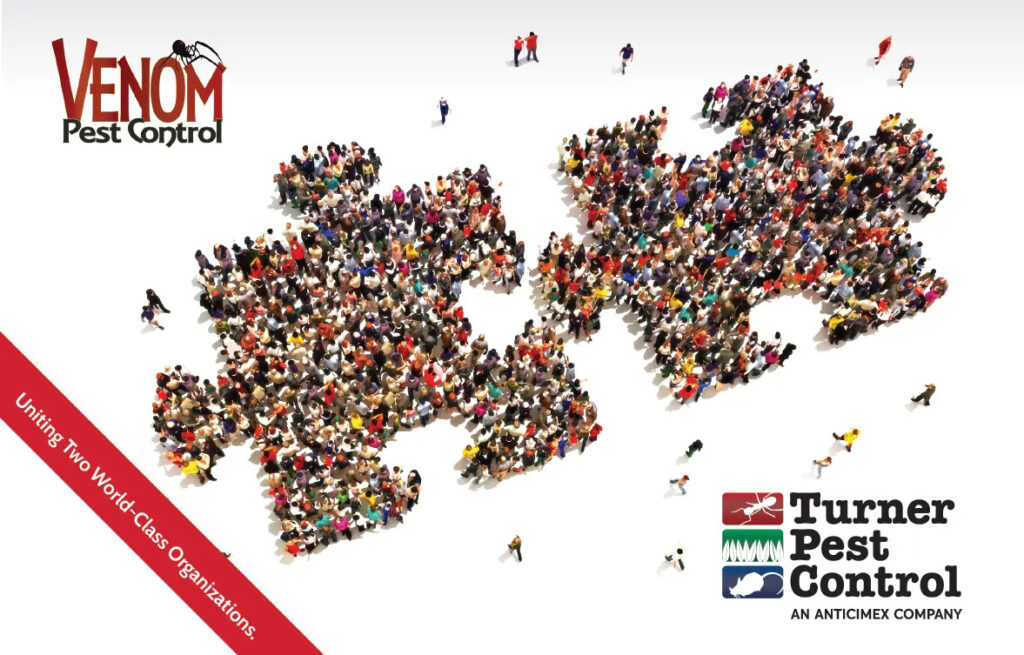 Have you ever caught a glimpse of something crawling in the kitchen or discovered you have a bug bite but don’t know where it came from? Chances are good that you’ve encountered one of the many household pests that are simply a fact of life. This guide offers a quick overview of how to identify these pests and why they may be in or around your home.
Have you ever caught a glimpse of something crawling in the kitchen or discovered you have a bug bite but don’t know where it came from? Chances are good that you’ve encountered one of the many household pests that are simply a fact of life. This guide offers a quick overview of how to identify these pests and why they may be in or around your home.
Cockroaches
Cockroaches are known for their ability to survive and thrive all over the world, both indoors and out. In our area, these are the four types you’re likely to see.
American Cockroach
When you spot an extra-large roach, it’s probably an American cockroach. Not only are they the largest house-infesting cockroach, it can also fly for short distances. Although they’d rather be outdoors crawling through leaf litter and piles of mulch, they’re just as content living inside your house. They can easily find their way into most structures, where they start their search for water and food. To reduce sources of sustenance, take a look around from an insect’s point of view: You may notice crumbs on a kitchen island, food and water in your pet’s bowls, and small puddles of water from a dripping faucet.

How to identify American cockroaches:
- Straight antennae
- Six legs with small spines
- About three inches long
- Reddish/dark brown bodies
- Two wings that reach beyond their body length
German Cockroach
When you’ve had the unfortunate experience of seeing a lot of roaches gathered in one spot, you’re likely dealing with the German cockroach, the most common type of cockroach in the U.S.
These pests are especially problematic: They will thrive inside your home, moving into every corner, and laying eggs everywhere. Because a single female needs to mate just one time in order to lay eggs for the rest of her life, she can produce an entire generation that goes on to have many thousand more offspring in just a year’s time. German cockroaches are also active travelers, making their way inside in everything from used furniture to paper grocery bags.

How to identify German cockroaches:
- About a half an inch long
- Tan or light brown bodies
- Six spined legs
- Horizontal stripes behind the head
Asian Cockroach
Asian cockroaches are often confused with German cockroaches, but Asian cockroaches prefer to live outdoors and are much better fliers than German cockroaches. Although they’re found throughout the Southeastern U.S., Asian cockroaches haven’t been in Florida all that long, having appeared in the 1980s.
As with American cockroaches (and several other types of Florida pests), Asian cockroaches can often be found in mulch, gardens, and shady spots. Since they have a strong attraction to light, you may even see them heading for light bulbs, computer screens, and televisions.

How to identify Asian cockroaches:
- Other than having longer wings, these roaches are almost identical to German cockroaches in appearance
Smokybrown Cockroach
Smokybrown cockroaches can easily become dehydrated, so they’re always searching for spots that are moist and warm. They find those spots—and the decaying matter they eat—in holes in trees and under mulch piles. You may even spot them near your eaves.

How to identify Smokybrown cockroaches:
- Curved antennae
- Six spiny legs
- About an inch long
- Wings that extend beyond their bodies
- Mahogany bodies with black heads
Bed Bugs
No matter how fastidious you may be about housekeeping, these pests can still make their way inside and get along just fine in your home. Once they’re established, they can be difficult to get rid of on your own.
They prefer to feed on humans, but mice, pets, birds, and other animals will suffice. Able to ingest up to seven times their own weight in blood, they draw blood for approximately five minutes before stopping to digest.
Bed bugs also multiply relatively quickly, laying up to five eggs a day. The hatchlings are exceptionally tiny, and can pass through the hole made by a single stitch, such as those in mattresses.
One surprising fact about these pests is that they can go for months without eating and survive temperatures from just above freezing to more than 120 degrees Fahrenheit.

How to identify bed bugs:
- Contrary to what you’ve read, adult bed bugs can be spotted with the naked eye—they look like flat apple seeds and are brown before and reddish after feeding
- Bed bugs don’t have wings
- Nymphs are tan or white, but are very small and difficult to see
Millipedes
When humidity levels reach either extreme, these arthropods may head indoors. Fortunately, millipedes don’t pose a life-threatening danger, but they can still emit a foul-smelling substance that can be toxic to pets and small animals and that can cause blisters on humans.
These nocturnal pests go where they can find decaying vegetation and moisture, so you may spot them in grass clippings or leaf piles.

How to identify millipedes:
- More worm-like appearance than centipedes
- Blackish or brownish, sometimes with orange or red patterns
Earwigs
Good news—earwigs will not crawl into your ear and deposit their eggs! Instead, you might encounter them out in your yard or garden. You can find Forficula auricularia, the most common type of earwig in the country, in small, cool, dark spaces such as in the soil in a potted plant.
If you see them indoors, they likely entered through cracks and gaps, often those left in the wake of other destructive insects such as rodents or termites.

How to identify earwigs:
- Flattened, elongated bodies
- Forceps-like cerci (small appendages on the abdomen)
- Black or reddish-brown
Silverfish
Flour, paper, oats, and glue—these are just some of the foods that it’s easy to provide for silverfish in your home, although they can go a year without eating. These metallic-looking pests make their way inside to find moisture and high humidity, particularly in bathrooms. They don’t like direct sunlight, so when you see silverfish, they’re probably making their way from one dark hiding place to another.

How to identify silverfish:
- About three-quarters of an inch long
- Two antennae
- Flat, oval bodies
- Shiny silver, with scales
Spiders
There are tens of thousands of types of spiders in the word, with more than 3,000 identified in the U.S. Not all spiders are venomous, and size is no indication, since even some tiny spiders can inflict serious pain.
Here in Florida, the widow spider is one of the most dangerous spiders to look for:
Widow Spiders
Four types of widow spiders are found in Florida: the southern black widow, northern black widow, red widow, and brown widow. They’re nocturnal and hide in dense webs during the day. You may see them on your property in places such as sheds and water meter holes, or under things like barbecue grills that have been undisturbed for a long time.




How to identify widow spiders:
- One-third to two-thirds of an inch, although males can be even smaller
- Shiny abdomens with red marks or stripes
- Slender, long legs
Ants
Dozens of ant species commonly infest homes, although they usually live in colonies underground. You probably already know that they will eat nearly anything, but sweets are their favorite food. It’s not unusual to find that they’ve made their way to your kitchen and bathroom, where they’ve come for food and water.

How to identify ants:
- Antennae, plus three distinct body parts: head, thorax, and abdomen
- Six legs
- Size and color vary by species
Pests Bugging You? We’re Here to Help!
If you’re bothered by roaches, ants, bed bugs, or any of the other common household pests, get in touch with the experts at Turner Pest Control. We have affordable pest control services that can be customized to your home and needs.


